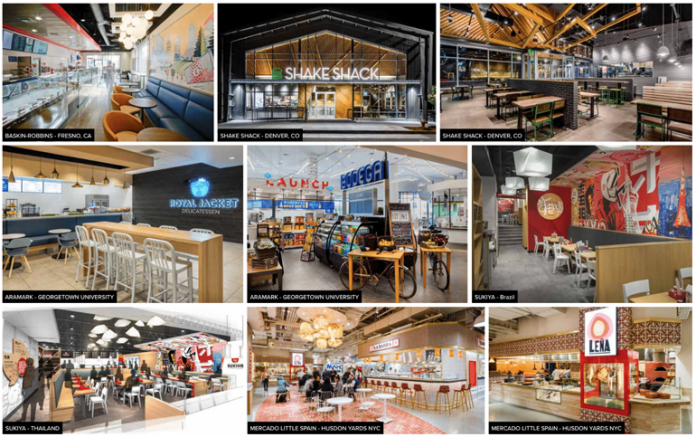As mentioned by Ron Ruggless, Southwest Bureau Chief, Nation’s Restaurant News, in his an interview (https://www.nrn.com/operations/designing-restaurant-future) with Lee Peterson, executive vice president for thought leadership and marketing at Columbus, Ohio-based WD Partners,
“Experts say, successful ‘Third wave’ restaurants will be smaller, sleeker and faster”
As operators knit more technology into their operations, juggle a growing herd of third-party delivery workers and compete for consumer attention in a crowded marketplace, restaurant designers are reimagining the look of the physical location. Design experts predict that consumer expectations for speed and convenience will mean increased visibility for drive-thrus and pick-up areas, smaller, more efficient kitchens, and a more customized in-store experience overall.
According to Lee Peterson, technology has completely changed the way we think about physical space.
WD Partners has teamed with technology providers like Google to envision what the “Restaurant of the Future” might look like. The result was a quick-service restaurant that rotates the building the around, bringing the drive-thru to the front — with designated lanes for app users and delivery couriers — and puts the kitchen and dining room toward the back of the property.
It mentions that 75%-80% of quick-service restaurant sales are made through drive-thru facilities, where 80% of the customers get a lousy experience as they need to drive through the backend of the restaurant often encountering dumpsters, sketchy landscapes and wind-blown trash.
“What if we took the restaurant and turned it around and started to celebrate the idea that 80% of your customers just want to pull in, get that hot food and go?” was a thought that had occurred in Peterson.
WD Partners brings out a theoretical quick-service restaurant where the drive-thru business is pulled to the front with three vehicle lanes.
- A speed lane for pre-paid meals ordered through a smartphone or branded app
- A “slow lane” for order-on-site purchases
- Designated for delivery drivers.
Photos: WD Partners
WD Partners envisions it would be complemented with a kitchen in the middle and a dining area at the back. They believe that around 20% to 25% of your customers who like to go to the store and sit down and eat could be accommodated in a groomed, quiet area at the back.
Accordingly, it can be witnessed that the industry is in its Third Wave where it focuses on simplicity which appeals to Millennials and Gen Z.
Customers tend to move from better is better rather than bigger is better. Whether it is good lighting or a better environment, Customer expectations of a quality experience also extend to design.
The Dual Areas to look into:
- Back house design
At the end of the day one has to agree that the kitchen is the heart of the restaurant. The evolution of the restaurant design cannot ignore the kitchen, where as evolve as fast as the front end.
It is also emphasized that more kitchen are tapping into efficient and multi-purpose equipment as operators seek to provide a changing menu while also shaving real estate from the restaurant box. Restaurants also seek to create an experience that will draw people out of the homes and away from off-premise consumption, which makes bar layouts change as well.
Some of the concepts looked into are quick cooking ovens, walk-in and back bar coolers; where the biggest challenge would be spacing.
Designers also highlight the increasing popularity towards exhibition cooking and open kitchens. Customers crave for exciting new atmospheres, they want to see the open flame, grills and wood-burning ovens. It’s all part of the show!
- Technology impact
Consumers are increasingly relying on digital channels for their shopping, and that extends to meal purchases as well.
According to Chris Lydle in Google’s retail innovation team, a 70% adaptation rate can be seen with buy online, pick up in store, or BOPIS.
The pick-up involves consumer is thinking, ‘What resources do I need to expend to get this, in a combination of time and money?’”
It is important to understand how to take advantage of customers who exhibit a serious buying intent and the importance of location in their buying equation.
The answer to their most asked question; “Where’s the nearest…?’”
Google’s retail innovation team also looks into the emergence and collaborations of modern concepts and designs. With Google’s ownership of navigational software app Waze, the company is looking at ways of geo-locating consumers after their orders and having it ready in, perhaps, the order-ahead lanes of WD Partners futuristic design. Making businesses engage with the shopper along the way.
The arrival data could be projected on displays where all employees could be aware of when patrons are arriving. Smartphone orders can reduced the friction of the restaurant experience.
This can be understood in the statement made by Peterson in his interview; “If it can take you two minutes instead of 15, why wouldn’t you use the app?”
Restaurant of the Future will provide a better area for off-premise orders as well and perhaps provide an employee, or “concierge,” who tracks the consumer and knows when they arrive.
In conclusion, we need to rethink how we are doing things – Operations have to totally change.




